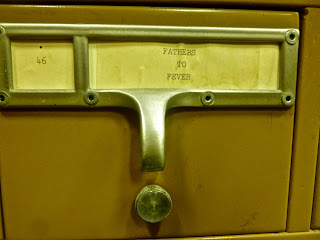VANISHING
Smith's Bar & Restaurant will be closing this week after 60 years off Times Square.
Tipster Louis Shapiro wrote in: "The venerable Broadway bar Smith's (8th & 44th) will be closing this week because of (surprise) lease issues. If you try their webpage, you get bumped to their sister bar,
Social. Yet another sad loss."
An employee at the bar confirmed that
Thursday will be their last day in business.
 Smith's opened in 1954
Smith's opened in 1954. For decades, it was a deep, dark dive off Times Square. People committed suicide in their booths. Well, at least one person.
They sold "hand-carved" hot sandwiches and hot plates from a steam tray. Corned beef. Brisket. Knockwurst.
 2004
2004
Then, sometime around 2009 or so, they were bought by a chain of anonymous pubs. The inside was renovated, the clientele changed. They printed
t-shirts and became a sports bar filled with big-screen TVs and tourists.
Out went the weird, meat-cluttered steam table. Out went Smith's old Times Square vibe.
I stopped eating there.
 2007
2007
It hasn't really been Smith's since.
But we still had that
gorgeous neon signage glowing over 8th Avenue. You could look up at it and, if you squinted hard, pretend Travis Bickle was still cruising the Deuce.
When its neighbors
The Playpen and The Funny Store were demolished and replaced with yet another hotel tower and
yet another Shake Shack, we knew Smith's would not last much longer. I won't be surprised if the whole building goes with it and we see another glass box rise on its grave.

Here's a bit on what Smith's used to be--
from the Times in 2005:
"Smith's Bar and Restaurant has held down the northwest corner of 44th Street and Eighth Avenue for 50 years, its name written in soot-coated neon script outside, in a style of sign once seen above countless New York bars and liquor stores but now largely extinct. While renovation has afflicted the separate dining room next door, the cavernous bar area of Smith's seems untouched by the wave of renewal that has brought the likes of Red Lobster and Bubba Gump to nearby Times Square.
A bright green menu panel above the steam tables opposite the bar advertises pigs' knuckles, knockwurst and lamb stew, and
the Irish barmen, in ties and white shirts, serve their lunchtime customers--a scattering of men bent over newspapers and racing forms--with curt, dishrag-snapping efficiency. As traffic hurtles by on Eighth Avenue and Midtown sandwich shops fill with office workers clutching cellphones, the thick air of Smith's murky depths seems to retard one's movements and slow the day's cascade of thoughts.
That a place like Smith's still exists in Midtown is a testament to the bipolar nature of New Yorkers, who are obsessed with the new and trendy and yet fiercely protective of old haunts and habits."


















































